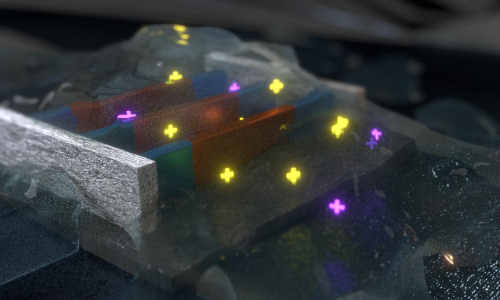Forget stitches — there’s a better way to close wounds. In this talk, TED Fellow Joe Landolina talks about his invention — a medical gel that can instantly stop traumatic bleeding without the need to apply pressure.
I want you guys to imagine that you’re a soldier running through the battlefield. Now, you’re shot in the leg with a bullet, which severs your femoral artery. Now, this bleed is extremely traumatic and can kill you in less than three minutes. Unfortunately, by the time that a medic actually gets to you, what the medic has on his or her belt can take five minutes or more, with the application of pressure, to stop that type of bleed.
Now, this problem is not only a huge problem for the military, but it’s also a huge problem that’s epidemic throughout the entire medical field, which is how do we actually look at wounds and how do we stop them quickly in a way that can work with the body?
So now, what I’ve been working on for the last four years is to develop smart biomaterials, which are actually materials that will work with the body, helping it to heal and helping it to allow the wounds to heal normally.
So now, before we do this, we have to take a much closer look at actually how does the body work. So now, everybody here knows that the body is made up of cells. So the cell is the most basic unit of life. But not many people know what else. But it actually turns out that your cells sit in this mesh of complicated fibers, proteins and sugars known as the extracellular matrix. So now, the ECM is actually this mesh that holds the cells in place, provides structure for your tissues, but it also gives the cells a home. It allows them to feel what they’re doing, where they are, and tells them how to act and how to behave.
And it actually turns out that the extracellular matrix is different from every single part of the body. So the ECM in my skin is different than the ECM in my liver, and the ECM in different parts of the same organ actually vary, so it’s very difficult to be able to have a product that will react to the local extracellular matrix, which is exactly what we’re trying to do. So now, for example, think of the rainforest. You have the canopy, you have the understory, and you have the forest floor. Now, all of these parts of the forest are made up of different plants, and different animals call them home. So just like that, the extracellular matrix is incredibly diverse in three dimensions. On top of that, the extracellular matrix is responsible for all wound healing, so if you imagine cutting the body, you actually have to rebuild this very complex ECM in order to get it to form again, and a scar, in fact, is actually poorly formed extracellular matrix.
So now, behind me is an animation of the extracellular matrix. So as you see, your cells sit in this complicated mesh and as you move throughout the tissue, the extracellular matrix changes. So now every other piece of technology on the market can only manage a two- dimensional approximation of the extracellular matrix, which means that it doesn’t fit in with the tissue itself.
So when I was a freshman at NYU, what I discovered was you could actually take small pieces of plant-derived polymers and reassemble them onto the wound. So if you have a bleeding wound like the one behind me, you can actually put our material onto this, and just like Lego blocks, it’ll reassemble into the local tissue. So that means if you put it onto liver, it turns into something that looks like liver, and if you put it onto skin, it turns into something that looks just like skin. So when you put the gel on, it actually reassembles into this local tissue. So now, this has a whole bunch of applications, but basically the idea is, wherever you put this product, you’re able to reassemble into it immediately.
Now, this is a simulated arterial bleed — blood warning — at twice human artery pressure. So now, this type of bleed is incredibly traumatic, and like I said before, would actually take five minutes or more with pressure to be able to stop. Now, in the time that it takes me to introduce the bleed itself, our material is able to stop that bleed, and it’s because it actually goes on and works with the body to heal, so it reassembles into this piece of meat, and then the blood actually recognizes that that’s happening, and produces fibrin, producing a very fast clot in less than 10 seconds.
So now this technology — Thank you. (Applause)
So now this technology, by January, will be in the hands of veterinarians, and we’re working very diligently to try to get it into the hands of doctors, hopefully within the next year.
But really, once again, I want you guys to imagine that you are a soldier running through a battlefield. Now, you get hit in the leg with a bullet, and instead of bleeding out in three minutes, you pull a small pack of gel out of your belt, and with the press of a button, you’re able to stop your own bleed and you’re on your way to recovery.
Thank you very much.
Story Source:
The above story is based on materials provided by TED.




